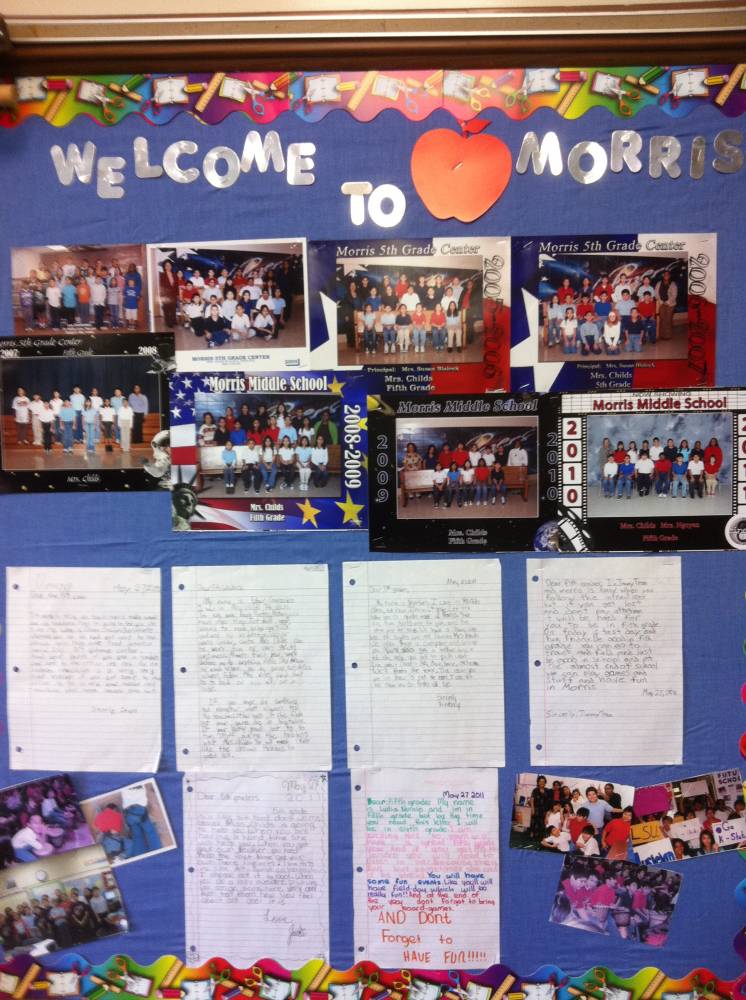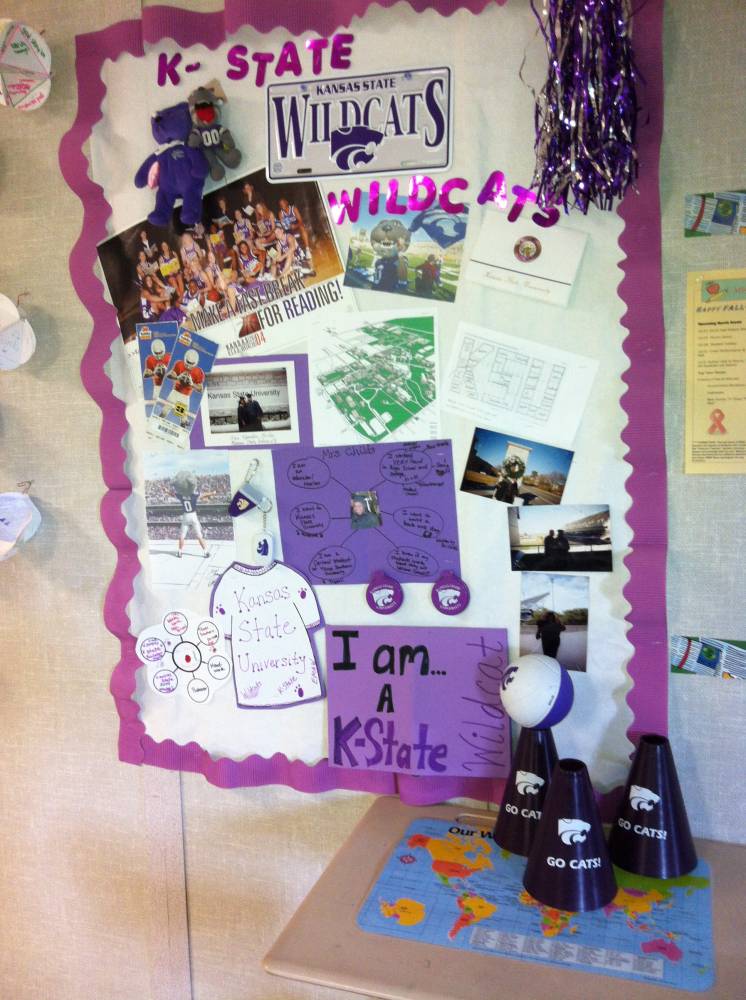
Robert John Meehan once stated, “Learning becomes relevant when we connect it with reality”. Students must be able to connect their reality with material being presented to them. They must also feel comfortable enough in their classroom environment to establish a reciprocal teaching and learning relationship with their teachers. As a classroom educator for eleven years in the public school systems, I have always made it a point to take pride in creating a welcoming environment for my students. No matter if they were from China, Kansas, or around the corner from the school—I put countless amounts of thought into small details that make a big difference. The effort I put into the classroom environment is not necessarily for my students to have the “wow factor” when they walk into my classroom, but it must be flexible, engaging, transparent, and personable to help me enhance the students learning experience.
When I began my career in education, I vowed to myself, to never get so stuck in a routine, that I put up the same posters in my classroom, in the same place every year, and do the exact same lessons, at the same time of the year. I also wanted to make sure my students understand that I am human, and that I have feelings, preferences, hobbies, family, friends, and that I have encountered many of the same experiences they have or will encounter. For most of my career, I have found myself asking the question, “what if I were in their shoes” ? Below I will feature some key areas I would recommend educators examine when developing their classroom environment:
Teacher Transparency: Students want to know who you are. If you don’t share this somehow in the learning environment, they  will possibly become disconnected to you and your lessons. It is human nature to want to know how someone “knows so much” about their subject matter, or “why are they teaching this to me”? Students want to establish a connection with their teachers. You are stuck together in the same room all year. What makes you similar to or different then the students? I become transparent by sharing my favorites (music, movies, colors, foods, etc), hobbies, college experiences, travel experiences, and then I weave my knowledge into what we are learning. If from the beginning, you are transparent enough with your students, they will trust you when presenting them with new knowledge as they will be more engaged as opposed to just being “present”. Specific examples: Hang up pictures (of yourself, family pictures, former classes or students, college memorabilia, travel pictures and souvenirs, etc.) display examples of past lessons, share your weaknesses or strengths in school, and lastly, be willing to admit when you are still learning—let students know that you do not know everything.
will possibly become disconnected to you and your lessons. It is human nature to want to know how someone “knows so much” about their subject matter, or “why are they teaching this to me”? Students want to establish a connection with their teachers. You are stuck together in the same room all year. What makes you similar to or different then the students? I become transparent by sharing my favorites (music, movies, colors, foods, etc), hobbies, college experiences, travel experiences, and then I weave my knowledge into what we are learning. If from the beginning, you are transparent enough with your students, they will trust you when presenting them with new knowledge as they will be more engaged as opposed to just being “present”. Specific examples: Hang up pictures (of yourself, family pictures, former classes or students, college memorabilia, travel pictures and souvenirs, etc.) display examples of past lessons, share your weaknesses or strengths in school, and lastly, be willing to admit when you are still learning—let students know that you do not know everything.

Interactive Spaces: Your classroom is the students’ “home” as well. Have areas in your classroom dedicated to current events (not just calendared events), and spaces that can be built upon over the course of the year. Have areas of your room that the students will have some accountability in managing or decorating. Always have an area of the room, that is interchangeable, and which reflect the content being studied at that time. Specific Examples: Specific goals or objectives posted in “student friendly” language; feature a student every two weeks (on a bulletin board), set class rules and display them; create a “question wall” or “question box”; facilitate a “post office” for hand written letters to be sent to staff members or students (or course these are pre-screened before distribution).
Literacy and Print Rich: Consider a multitude of colors, textures, patterns, and various types of text to be posted and used within your classroom (at the end of the year when things are taken down, students should notice the difference in the setting—often referring to it as looking “plain” or “boring”). Sure, you are provided with textbooks and materials to accompany them, but always keep in mind other avenues you can use to provide information about your content area. Use materials they would use at home— like magazines, technology, and products they consume. Be sure to also include things they might not see at home such as: newspapers, coupons, journals, maps, brochures, dictionaries, atlases, thesauruses, and almanacs. Lastly, books and printed materials from other subject areas (other than your specialty area) are needed—as you should be able to show students how their knowledge in your class can be integrated in other subjects and domains.
Cultural and Environmentally Aware: If I am teaching students who are from another country (which I have done my entire career), it is essential that I learn what I can about their culture, and include materials or displays in the class about the culture. If I do not know anything about the students’ culture, I gently and gradually let the student educate us about their background (usually bringing in artifacts or technology). I let all students know that we all have things and experiences that make us unique. I’m from another state—I use examples from my upbringing in another place to let the students know of the differences that we have in our generations and within the different states in our country. Having taught in a large urban city for most of my educational career, students come from a variety of neighborhoods, and have varying experiences just within one city. Even if you are a teacher who grew up in the same community your students attend school, there are always manners in which you can share more of what is going on around you, and incorporate it into classroom. Specific Examples: Provide books and literature, and images representative of the backgrounds of students in your classroom; service learning community projects; parents/grandparent guest speakers.
Relaxation Spaces: No matter how old or young, students are open to a particular space where they can take “brain breaks”, silent read, or just a place to have a “change of scenery” while working. From bean bag chairs, old recliners/furniture, lofts, carpet squares, special lamps, to a “shoes free” zone—students feel more welcome into a room where they have an “outlet”, and a creative space uniquely made for their classroom only. Though leery to use this space at first, I have found my students really appreciate the gesture made to provide them with the comfort (and bonus) of a “rest area”.
Visitors to my classroom over the years, often say my room feels “cozy”. My classroom has always been more than just a “room”. It is our home. It should reflect what we are learning, what we have yet to learn, and who we are. Students must understand the relevance of their learning, and have an understanding of you and your expectations. If you are missing any of these elements in your classroom, I might suggest you begin to consider them. Your teaching and learning will become much more efficient, when the classroom environment invites students to be themselves and be comfortable.



You must be logged in to post a comment.